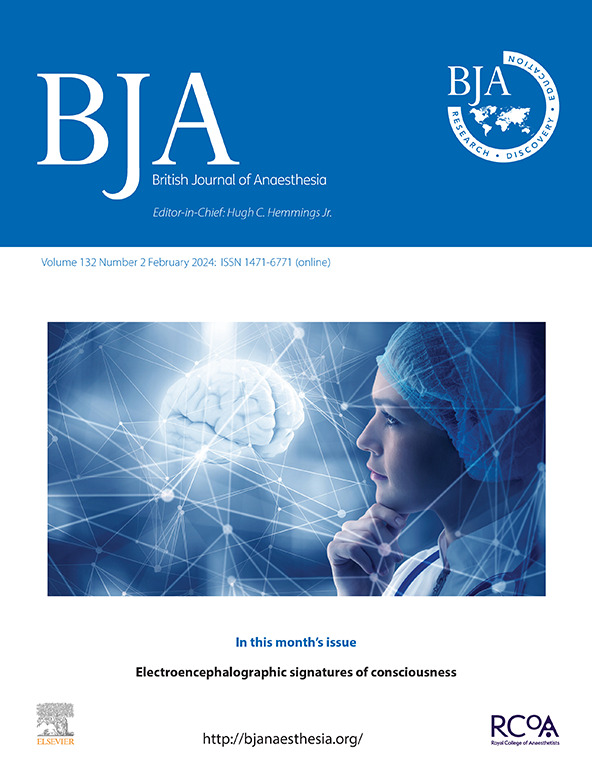SNAP-3中有向无环图最小化偏倚和优化因果推断:一项老年外科患者虚弱、多病和谵妄的观察性队列研究。
IF 9.1
1区 医学
Q1 ANESTHESIOLOGY
引用次数: 0
摘要
背景:第三届Sprint国家麻醉项目(SNAP-3)旨在描述老年手术人群手术后虚弱、多病和谵妄的影响及其管理。因果图,如有向无环图(dag),是一种有用的工具,可以直观地表示变量之间的关系,并阐明所选统计模型背后的因果假设。方法:描述了SNAP-3队列研究的dag是如何开发的。已经创建了暴露-结果关系的dag,用于虚弱、多病和谵妄(作为暴露)与术后结果(住院时间、谵妄、发病率、死亡率)之间的关系。dag是按照“构建有向无环图的证据合成”的方法创建的,并在独立的临床专家输入后进行了修订。结果:dag提供了假设的可视化表示,并为适当的统计调整提供了客观的方法。所有dag的关键节点包括年龄、痴呆、遗传易感性、听力和视力损害、住院时间、恶性肿瘤、手术严重程度、多种药物、术后围手术期药物服务、术前临床回顾、性别、社会剥夺、急症、谵妄、虚弱、多种疾病、相互作用、发病或某些dag的结局。结论:dag为观察性研究的统计决策提供了一个透明的框架。我们以SNAP-3 dag为例概述了dag,以解释开发和使用因果图的基本概念。本综述承认探索临床关系的复杂性和必要的假设,为所描述的关系的批判和未来研究的改进提供了机会。本文章由计算机程序翻译,如有差异,请以英文原文为准。
Directed acyclic graphs to minimise bias and optimise causal inference in SNAP-3: an observational cohort study of frailty, multimorbidity, and delirium in older surgical patients
Background
The 3rd Sprint National Anaesthesia Project (SNAP-3) aims to describe the impact of frailty, multimorbidity, and delirium, and their management, on outcomes after surgery within the older surgical population. Causal diagrams, such as directed acyclic graphs (DAGs), are a useful tool for visually representing relationships between variables and for clarifying the causal assumptions underlying a chosen statistical model.
Methods
A description of how the SNAP-3 cohort study's DAGs were developed is provided. DAGs have been created for the exposure–outcome relationships between frailty, multimorbidity, and delirium (as an exposure) with postoperative outcomes (length of hospital stay, delirium, morbidity, mortality). DAGs were created following the approach of ‘Evidence synthesis for constructing directed acyclic graphs’, and revised after independent clinical expert input.
Results
DAGs provide visual representations of assumptions made, and provide an objective approach to appropriate statistical adjustments. Key nodes within all the DAGs included age, dementia, genetic predisposition, hearing and visual impairment, length of stay, malignancy, operative severity, polypharmacy, postoperative perioperative medicine service, preoperative clinic review, sex, social deprivation, urgency, with delirium, frailty, multimorbidity, interaction, morbidity acting as exposures, or outcomes in certain DAGs.
Conclusions
DAGs provide a transparent framework for statistical decision-making in observational research. We provide an overview of DAGs using the SNAP-3 DAGs as examples to explain fundamental concepts for developing and using causal diagrams. This overview acknowledges the complexities of exploring clinical relationships and the assumptions that are necessary, providing an opportunity for critique of the relationships described and refinements for future studies.
求助全文
通过发布文献求助,成功后即可免费获取论文全文。
去求助
来源期刊
CiteScore
13.50
自引率
7.10%
发文量
488
审稿时长
27 days
期刊介绍:
The British Journal of Anaesthesia (BJA) is a prestigious publication that covers a wide range of topics in anaesthesia, critical care medicine, pain medicine, and perioperative medicine. It aims to disseminate high-impact original research, spanning fundamental, translational, and clinical sciences, as well as clinical practice, technology, education, and training. Additionally, the journal features review articles, notable case reports, correspondence, and special articles that appeal to a broader audience.
The BJA is proudly associated with The Royal College of Anaesthetists, The College of Anaesthesiologists of Ireland, and The Hong Kong College of Anaesthesiologists. This partnership provides members of these esteemed institutions with access to not only the BJA but also its sister publication, BJA Education. It is essential to note that both journals maintain their editorial independence.
Overall, the BJA offers a diverse and comprehensive platform for anaesthetists, critical care physicians, pain specialists, and perioperative medicine practitioners to contribute and stay updated with the latest advancements in their respective fields.

 求助内容:
求助内容: 应助结果提醒方式:
应助结果提醒方式:


